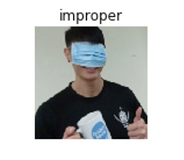Ha Ha LOL! Hi stochastic your post made me laugh, I hope your having lots of laughter today to!

Try adding some more pictures to your classes and try it with a bigger model. See this post here.
Great post!
Hope this helps
mrfabulous1 

Ha Ha LOL! Hi stochastic your post made me laugh, I hope your having lots of laughter today to!

Try adding some more pictures to your classes and try it with a bigger model. See this post here.
Great post!
Hope this helps
mrfabulous1 
